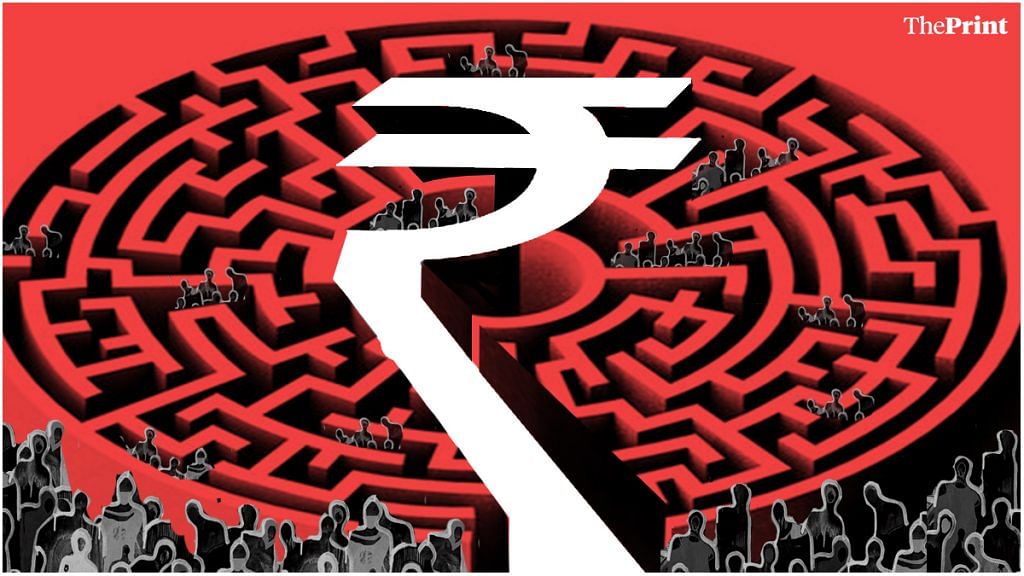India’s economic recovery from the Covid-19 pandemic has been faster than expected, and yet, important risks to the economy remain.
In thinking about the Budget process for 2021, we need to establish a perspective on the forces at work.
There are five things to watch out for that will determine the shape of the Indian economy in 2021.
Also read: Why Indian economy seems set for revival in the new year after a tough 2020
1. The pandemic
An array of studies shows antibodies in a large fraction of the population, with the corresponding decline in the number of people who are susceptible, thus slowing down the pandemic. Anecdotal evidence shows sharp gains — for example, there have now been days in Mumbai with zero deaths attributed to Covid-19 in the official data. The spread of the virus has slowed down in almost all major states of India, with the reproduction rate falling below one.
Vaccine production has started on a large scale everywhere, and many in India will now be able to get vaccinated. This will further help reduce the number of people who are susceptible to Covid-19. Every day, more people are getting comfortable about the dangers, and are increasing their economic activity.
2. Consumer demand
In the period of the lockdown, consumer demand crashed. Part of this was mechanical — if people could not go out to visit markets, there were no sales. Services like transport and hospitality saw a collapse.
After the lockdown, consumer demand was down as first, people’s incomes had contracted, and second, even when incomes started rising, there was uncertainty about whether this was going to be a steady increase or the economy could collapse again. As long as deaths were rising and hospitals were full, there was fear that the country could collapse into a lockdown again. This kept consumer demand low.
These fears have abated with the falling number of deaths and the ability of the health system to cope with Covid patients. This has, therefore, led to a reduction in uncertainty in the economy and an increase in consumption demand.
However, there are fears that lower employment levels mean lower incomes, which could keep demand suppressed, after it picked up due to pent up declines.
Also read: Modi govt is planning to set up DFIs, but it needs to figure out sources for funds first
3. Investment
The most important determinant of economic buoyancy in India is private investment. Higher uncertainty pushed investment demand down. As the uncertainty in the economy reduces, businesses will have a more stable environment to invest in.
However, the balance sheets of many companies, particularly small businesses, have been impaired by the crisis. The RBI gave companies with bank loans a moratorium for the period of the lockdown as companies were unable to repay loans. This moratorium did provide help, but lower demand, fixed costs and the requirement to pay interest on existing loans put pressure on companies.
Impaired balance sheets of firms — financial and non-financial — will exert a significant drag upon the extent of investment revival. The old agenda of firm resolution remains highly important. The Insolvency and Bankruptcy Code needs to come back into action, and we have to go back to the FRDI Bill in order to establish a resolution mechanism for financial firms.
4. Fiscal deficit
The contraction in the economy meant the government’s tax revenue fell sharply. The fiscal deficit for 2020-21 is expected to be in the range of 6.2 to 6.5 per cent.
The capacity of the government to spend more will depend on the level of deficit. If the debt increases beyond comfort levels, then next year too, the government’s capacity to spend further will remain impaired.
5. Inflation
In the last few months, India has been seeing a rise in inflation. Initially, everyone thought it was caused by supply side issues caused by the lockdown, as demand was clearly suppressed.
But now that supply side issues and transportation bottlenecks have long been addressed, inflation still remains higher than the target, and even beyond the band around the target put in place by the RBI. Higher inflation, particularly in food, not only affects the spending capacity of the poor, but also creates greater uncertainty for businesses.
The hard-won credibility of the RBI in the post-2015 period — of having a focus upon inflation and having the tools to fight it — is now coming under question. The government and the RBI need to stay firm on the inflation targeting framework that has helped stabilise India’s macro economy.
Ila Patnaik is an economist and a professor at National Institute of Public Finance and Policy. Views are personal.
Also read: Relaxing inflation target for growth isn’t necessarily good, Modi govt must assess idea well
